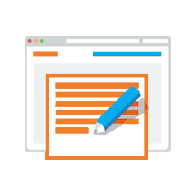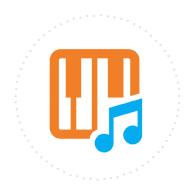Musika Quick Stats
24 Years
Since We Started
41,456+
Happy Customers
10,769
Cities with Students
3,123
Teachers in Network
Lesson Special - Up to 20% OFF! Get Started Now with a Risk-Free Trial!
Here are just a few of the many teachers offering Guitar lessons in Chandler . Whether you are looking for beginner guitar lessons for your kids, or are an adult wanting to improve your skills, the instructors in our network are ready to help you now!
Instruments: Guitar
For beginning students, I would like to start with knowing exactly where they are at with guitar; how to hold it, how to tune it, how strum it. Once the student understands those fundamentals, I like to start on open chords with easy fingerings (usually learning chords is very exciting since you can hear what you are accomplishing). With that, I would like to get to know the student and understand what the student wants out of the lessons; what they like to listen to, what they want to learn, what is difficult for them, etc. Read More
Instruments: Piano Guitar Bass Guitar Keyboard
Most of my students (who don't already know) start off with basic theory (Major Scale & Major and Minor Chord Formulas). Whatever their ultimate goal for learning would determine where I would take it from there. If your goal is to play one song for your significant other we can do just that. If your goal is to perform we can cater to that as well. Maybe you're goal is to learn enough to write your own songs. Read More
Instruments: Piano Guitar Voice Trumpet Keyboard Electric Guitar
I'm a motivated, passionate instructor who loves working with students and sharing my love of music. In 2000 I graduated from Full Sail University with a Bachelor of Science and Arts. Composing and Songwriting has taken me around the world and has been the most rewarding experience of my life. I've had the opportunity to work with and play along side legendary artists that I've grown up listening to and admired. Read More
Instruments: Piano Guitar Cello Drums Bass Guitar Ukulele Mandolin Double Bass Music Keyboard Djembe
Teaching is a huge responsibilty that I do not take light heartedly. If we as teachers do a suburd job, it will have a huge effect on a students over all life. Musical education teaches us about the mind and body and balance between the two. It teaches us logic, problem solving, and creative thinking in balance with eachother. It teaches us posture, breath, how to think. It teaches us to listen, and to communicate, to engage with others, it teaches us work ethic and how to colloborate with anyone. Read More
Instruments: Guitar Electric Guitar Classical Guitar Acoustic Guitar
I like the the traditional music theory method of learning and how it utilizes a musical environment, it's not just about guitar it's about absorbing musical harmonies and finding where it is your piece will fit. Personally, I know that a good guitarist can be trained but great guitarist have a thirst for it. Everybody is going to mess up so their is no sense in talking about how bad or how good someone is. Read More
Instruments: Piano Guitar Classical Guitar
I studied music with the intention to be the teacher I wanted as a youth. I am kind, patient, and creative. I have perfected a process to where 30 minutes of conceptualization matched with strategic practice, will help you get much closer to your goal, in half the time. why should it take years to master an instrument? The traditional approaches used are good, but people desire to make gains quickly. Read More
Instruments: Piano Guitar Drums Bass Guitar Electric Guitar Acoustic Guitar
I started teaching when I first got my drivers license in order to maintain an income that was related to music. I quickly learned that I was quite decent at explaining concepts and connecting with students on different levels. When I was 19 I started working at the School Of Rock where I taught group classes, 1 on 1, and helped put shows on based on curriculum that I was given by the school. Read More
Instruments: Trumpet
If you play more than one instrument, how did you decide to start playing the second? (Or 3rd, 4th, 5th, etc)!
In addition to playing the trumpet, I also play ukulele. In my first year at Juilliard, I had a hard time improving at Ear Training. Taking up a chordal instrument like the ukulele allowed me to hear music in a completely different way and advance my ear training skills much more quickly. I think it's very important if you play a single line instrument to learn a chordal instrument; whether it's harp, piano, ukulele, guitar etc. After getting better at ukulele, I formed a band with a colleague from school. Now, I write songs for my band and have a lot of fun playing and performing a different genre of music!
When did you decide to become a professional musician? Was it a gradual decision or was there a defining moment for you?
I have enjoyed playing music since I was very young. When I got to high school, I started taking music seriously and ended up attending the summer music camp at Interlochen Arts Academy. At Interlochen, I gained some of my first experience playing in orchestra which quickly became one of my biggest passions. Near the end of camp, we performed Mahler’s second symphony. I was captivated by this piece, and from the first rehearsal, I decided that I wanted to play and perform music for the rest of my life.
What does a normal practice session look like for you?
A normal practice session for me starts off with about ten minutes of long tones and breathing exercises, resting as much as I play and going very slowly (38 beats per minute). After this, I work out of the Stamp book to play pedal tones and slur up above the staff. Then, I work on technical exercises, which include intervallic slurs, multiple tonguing, articulation and other things from Bai Lin, Shuebruk, Arbans, Flexus or Franquin. I write down everything that I do and how it went. I typically work on a single exercise for about a week and then move on to the next one. After I get my warm up and technical exercises out of the way and take a break, I work on the music that I have to play for any upcoming auditions or performances. It's important to me to start the day off as relaxed as possible, making sure that all of the technical aspects of my playing are in the proper place before I move on to my music. It makes playing difficult music much easier!
What advice do you have about practicing effectively?
Since the trumpet has a max practice time of around two or three hours, it is incredibly important that students use their time effectively. We can't spend two or three hours on a single passage of music like a violinist or pianist, so every note we play should have our complete attention. Trumpet players must also not overplay anything, as it's very easy to sustain a injury or to lose that mental focus. Resting as much as we play and breaking up practice sessions into thirty-minute blocks is a very effective strategy to working around these issues.
When will I start to see results?
Results can vary student to student. For example, a student working on articulation will see results much faster, a few days to a week, than a student working on an embouchure change, which could take anywhere from month to a year. However, since my lesson plans involve writing everything down (what the exercise or etude the student is working on, what is good and bad about it, time spent on material, what to improve, etc.) students should be able to easily document their progress day by day. When starting out with lessons, it’s typical to see a great deal of improvement in a short amount of time.
24 Years
Since We Started
41,456+
Happy Customers
10,769
Cities with Students
3,123
Teachers in Network
Trusted as the industry leader, for over 21 years the teachers in our network have been providing Guitar lessons in Chandler to students of all ages and abilities.
We'll then reach out to the teachers for you.
Schedule the risk-free trial lesson directly with the teacher.
Continue with that teacher or try someone else.








Jake
hey, man i've dabbled into playing guitar for a few years now.. I am just looking for someone to be able to play with and help me out hope you can help!
susan
My 17 year old son is interested in learning the guitar. He has never taken any music lessons before. He has a good ear and has always enjoyed listening to music.
Ben
I am 32 years old and looking to take some guitar lessons. Looking around for a teacher close to my age that is patient and works well with beginner adults